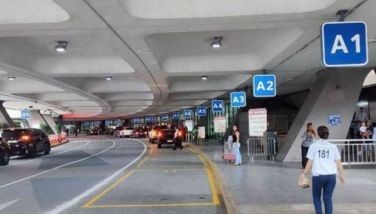Transform ports instead of changing law

Recently, Senate President Franklin Drilon met with a group of businessmen mostly from the domestic shipping industry which included Edgardo Lacson, president of the Employers Confederation of the Philippines (ECOP).
In the midst of calls by Philippine exporters to find ways of lowering their shipping costs to help them become more competitive in the global marketplace, the representatives from the domestic shipping industry presented some suggestions formulated by the Philippine Inter-island Shipping Association (PISA).
The group intended to convince Senator Drilon that there are other options other than tinkering with the Cabotage Law.
Complex problems of ‘feeder’ economy
It’s not easy to address the problem facing our exporters, especially since the country is very much a “feeder†economy where our exports and imports are not brought directly from the source or to the destination, respectively.
Instead, exporters have to use smaller feeder vessels to transport cargo to major Asian hubs like Hong Kong, Shenzhen and Kaoshung for cargo to the Americas or Singapore and Malaysia to Europe. Using feeder vessels means added costs that Chinese, Malaysian or Singaporean exporters don’t need to pay.
Our exporters cannot demand direct delivery because the volume of shipments is often too insignificant to justify direct charters. This is akin to air travel where direct long flights are not warranted for destinations that cannot fill up a big airplane.
Domestic trade peculiarities
The country’s domestic trade carries its own peculiarities that contribute to making inter-island shipping more expensive.
The biggest impact on cost is the fact that trade volumes is most often small, needing much smaller ships. An analogy here is the kind of transport used in barrios as against cities: it doesn’t make sense to have the big metro buses serving barrio to barrio routes because there are just not enough people who will use the bigger vehicles.
Another factor affecting domestic trade costs is the imbalance of shipping volumes between the south and north, and between consumer and production areas. Most goods are either imported through Manila or manufactured in Luzon, so much so that returning vessels are usually empty.
Local port inefficiencies
One other reason for the high cost of inter-island shipping is the lack of ports and port facilities that contribute to downtime, thereby making delivery system turnarounds inefficient. Add to this the cost of truck bans, local government informal fees, accommodation fees, and so many other incidental costs that add up to the handling expenses.
Philippine ports have been under-developed for so long. Several have shallow drafts that inhibit larger ships from docking. Very few ports have gantry cranes that help speed up the turnaround time of loading and unloading to goods.
The layout of ports is often ill-designed so much so that passenger terminals are not designed to be serviced by buses for roll-on, roll-off ships. In the same breath, there is an absence of silos that can serve bulk commodities, or fuel depots to supply the diesel needs of ships and barges. Worse, the ports are small without any room for expansion.
Even big ports are ill-equipped. The Port of Manila has only two gantry cranes. Moreover, it has a very low draft that inhibits vessels with heavy loads from docking. The Port of Cebu is over-crowded, with incoming ships having to wait for hours before being allowed to berth.
Because most ports lack the necessary facilities, ship owners are forced to buy vessels with cranes, or to install cranes in their vessels. On both counts, this means additional costs that have to be passed on to their clients.
There are other shipping-related expenses that add up to the high cost of transporting goods inter-island and to other major international hubs. The high cost of port operations, as well as arrastre services are just a few that need to be reviewed.
Other cost factors
More importantly, according to the ship owners, travel by sea is not the only culprit in the high cost of moving products from the manufacturing or agricultural bases to the consumer. In fact, they say, shipping in relation to the cost of goods is but a small percentage of overall costs.
Lastly, foreign ships enjoy benefits that ships plying the domestic trade routes do not. These include a holiday on corporate income and common carrier taxes, as well as the absence of duties, value-added taxes, and dry-docking VAT.
Proposed solutions
The problems are without doubt more complex than what has been enumerated above. Yet any solution, however minute, should be given attention.
For starters, there is a need to focus on the long-term solution of lowering freight and logistics cost through a nationwide development plan that involves clustering manufacturing and production centers nearer shipping and air ports.
Our export processing zones including agricultural zones are often too distant from the ports that will move the products to its destination, whether local or international.
For example, Batangas may be developed to become a more viable international and domestic port by encouraging the development of manufacturing sites around the area. The same goes for the Luisita-Clark and Subic corridors, which are ideal for light industries. Sarangani may be developed as a fisheries corridor to serve General Santos City.
Other proposed solutions involve leveling the playing field for foreign and domestic ships, i.e., imposing the same level of taxes on both; reducing the manning complement of domestic ships; and giving domestic ship operators the discretion of whether to drydock their vessels in the Philippines or abroad.
Finally, let us remember that ports should serve a more dynamic role in our economy. For so long, our ports have operated with short-sighted goals, often being left behind in serving the needs of the country’s people and business.
Much like building expressways or skyways, ports should be developed as hubs that will help lower the cost of transporting goods and services. Ultimately, the goal is to support future growth and make the Philippines truly competitive.
Facebook and Twitter
We are actively using two social networking websites to reach out more often and even interact with and engage our readers, friends and colleagues in the various areas of interest that I tackle in my column. Please like us at www.facebook.com and follow us at www.twitter.com/ReyGamboa.
Should you wish to share any insights, write me at Link Edge, 25th Floor, 139 Corporate Center, Valero Street, Salcedo Village, 1227 Makati City. Or e-mail me at [email protected]. For a compilation of previous articles, visit www.BizlinksPhilippines.net.
- Latest
- Trending































